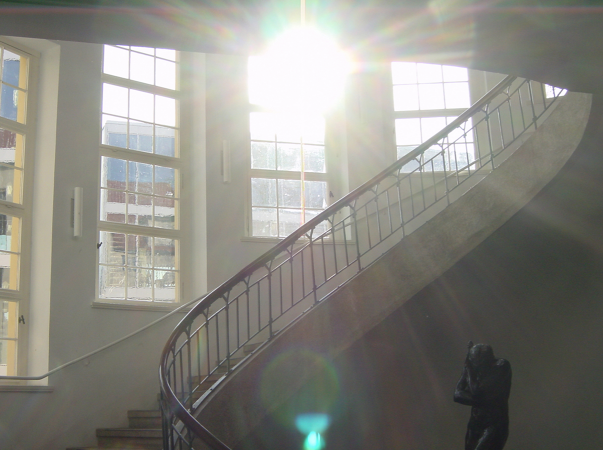
Sunrise, 2009
David Claerbout
This Sun is Always Shining
'O Sole Mio', Parasol unit foundation for contemporary art: London, 2021
Once upon a time, on the wall of Edvard Munch’s studio, there was a cut-out from a magazine advertisement about the health benefits of infrared. It read Diese sonne strahlt immer, which became the title of my 2012 exhibition at the Vienna Secession.
Throughout early modernity, industrial modernity and to this day, there seems to have been a promise that if we work hard enough and push our belief in scientism to its limits, we might arrive at a stage where all the dark corners of human existence are permanently lit up, reaching, as I imagine, the final stage in the pursuit of happiness.
So much thinking and desire is based upon light, enlightenment, reason and the dangers of the sleep of reason, that it is easy to detect a contempt for the opposites: sleep, darkness and resting. However, in my dictionary I have slowly come to exchange enlightenment for ‘too much light’. From a neurophilosophical point of view there are many reasons to believe that today’s criteria of light and happiness are the hallmark of the psychologically sick.
And here is where we are. Screens light up 24 hours a day. They are our main gateway to an outside world during confinement (the so-called lockdown). Permanent light.
As a filmmaker I have spent much of my life working with the light-based devices we call ‘video projectors’ or ‘video beamers’ that some 20 years ago had a feeble output of 250 ANSI lumens and today have up to 6,000+ ANSI lumens.1
What has always drawn my attention is the fact that what in film looks like a bright sunlit world is in fact conveyed by a relatively weak lightbulb or laser that bears no comparison to the sun’s approximate 126,600 lumens per square metre.
In my film installations, such as Reflecting Sunset, 2003, and Sunrise, 2009, but also in the Rodin in Weimar photograph, 2003, [below] the brightness of the sun has been thematised as something too bright for anyone to behold. Any beholder intuitively gets this feeling. Despite the weakness of the physical light source, our innate memory reminds us of the unease of looking directly into the sun. The digital film surmounts its own technical conditions and thematises its own incapacity by prompting a sheer human reflex.
And so continues my search for small, insignificant evidence of a world existing out there while having been in digital confinement for 20 years.

Untitled (Rodin in Weimar), 2013
1 ANSI, acronym of American National Standards Institute
David Claerbout ©2026